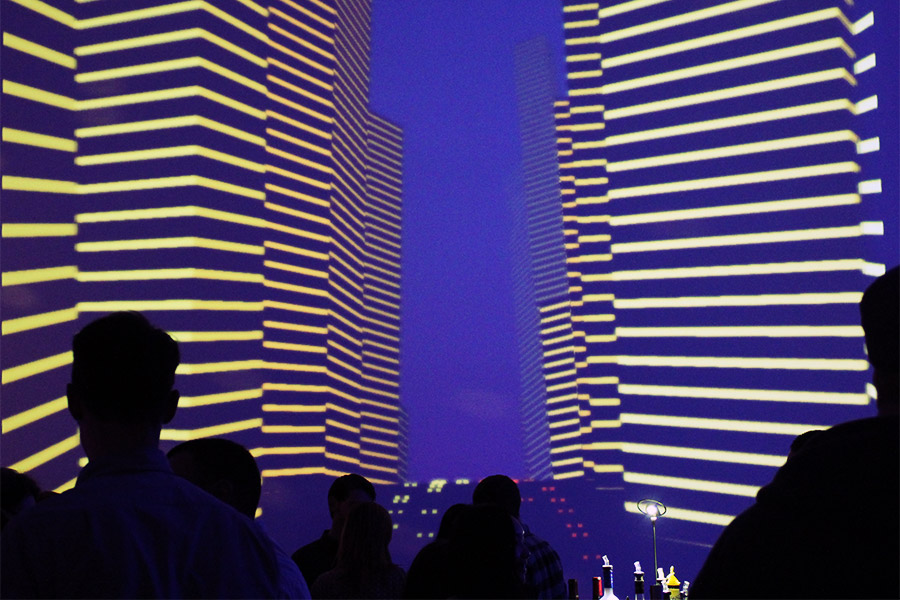How art is created has a huge effect on what you create – and how people experience it. In the 21st century, artists are still pushing the boundaries and create new abstract experiences. Instead of canvases and house paint, their tools are code and gadgets.
// Developer Labs
New projects and features, insights on the future of human-computer interaction, and updates on Leap Motion developer communities around the world.
If Jackson Pollock painted in a digital medium, what tools would he use? Modern digital art and design tools allow an incredible range of flexibility and control – but often require dozens of steps to accomplish what can be done naturally with paint and canvas. But with newer technologies, it’s possible to further bridge the […]

The web is all around us. With new technologies like WebGL, you can unlock great performance for real-time graphics with very little effort. Recently, we decided to throw a party for employees and friends, and decided that the large venue would work great with interactive projections. By using the Leap Motion Controller, our guests could interact with the visuals using one hand while holding a drink in the other.
Ever since the first human stacked one brick onto another, architecture has been concerned with creating immovable things. Even with the rise of smart interconnected environments – where lights, heating, doors, and other systems within a building all work together – the physical structures of our buildings remain the same. As a result, the movements and interactions of people within these spaces are shaped by the buildings themselves, like water flowing through a canyon.
This is why architecture and urban design are about more than simply ensuring that our buildings are safe and efficient. Or that they are merely beautiful. Buildings can inspire or isolate, connect or divide, so that debates about everything from the nature of community to the fate of doorknobs have radical social implications. How we live and work every day cuts to the core of what makes us human. But what if buildings could respond to our movements and gestures? What would that change?
Games, virtual reality, news aggregators, e-commerce, and even a development library built on top of LeapJS – these were just a few of the cool projects we saw at last month’s #ATXHack2014. Working with Compare Metrics, we brought together about 25 developers, hackers, and designers to build prototypes of next-generation interfaces. The finalists are being […]

PennApps is a meeting place for dedicated hackers ready to camp out for 48 hours straight of experimentation, coding, and a lot of energy drinks. We saw an impressive array of Leap Motion hacks built throughout the weekend, and when it came down to choosing the winner of the Leap Motion API prize, it was almost impossible to decide.
Hello again! I’m Bastien Bourineau, project manager and lead developer at OpenSpace3D, and I’m back to introduce the new OpenSpace3D release with improved Leap Motion support – including how we got around the perennial indexing issue. Last time, we saw how you can easily build 3D interactive environments using our free, open-source platform – designed with […]




